Research: Much of the research on giant pandas in the field makes use of fecal droppings and other sign, supplemented with camera traps, radio-collars, and (rarely) direct observation. Feces are a rich source of data, used in studies of diet selection and nutritional strategies, reproductive endocrinology, habitat use and preferences, and a plethora of genetic analyses. Although difficult to observe in the wild, the panda’s nutritional strategy—which relies on high throughput of a poor nutritional resource—means they defecate ~50 times per day, making them one of the easiest species in which to conduct fecal-based research. Pandas do not appear to discriminate where they defecate (i.e., do not use latrines), so they leave a nearly perfect track record of habitat use, which can be applied in habitat suitability models. Much of what we know about genetic structure, dispersal, mating strategies, inbreeding, and population size of pandas has been derived from fecal DNA. Researchers can also easily recognize and measure leaf and stem fragments, which are minimally digested in feces, to understand foraging preferences for the parts of the bamboo plant.
Another major sign used in research is feeding sites, also abundant and easy to locate. Pandas leave behind hundreds of bamboo stems, bitten off at a height of about half a meter. From these, researchers can evaluate preferences for different species and age classes of bamboo. Den sites can also be identified by markings, hair, and feces, and have been used to evaluate the microhabitat and microclimate characteristics of preferred dens.
Radio and satellite tracking have provided invaluable data on home range, resource use, mating strategies, and more. For a decade (1995–2006) the Chinese government would not allow radio-collaring of pandas, but since that moratorium was lifted, more data have been collected using this technique. Additionally, camera traps are now commonly used to monitor occupancy and habitat use, and evaluate scent-marking strategies.
Field research is complemented by a rich portfolio of studies on the behavior and biology of pandas in conservation breeding programs. Many of these have had a focus on reproductive biology and behavior in support of breeding efforts, which have improved dramatically. Three decades ago these populations were not self-sustaining (and it was wrongly assumed that pandas had some sort of breeding problem), but the application of this body of research has led to dramatic population growth, which surpassed all goals for maintaining viable populations in captivity. Moreover, these animals are starting to be used as a source population for reintroduction and genetic rescue of small, isolated wild populations.

Giant panda_A melanoleuca_conducting behavioral observation during breeding season_San Diego Zoo Wildlife Alliance
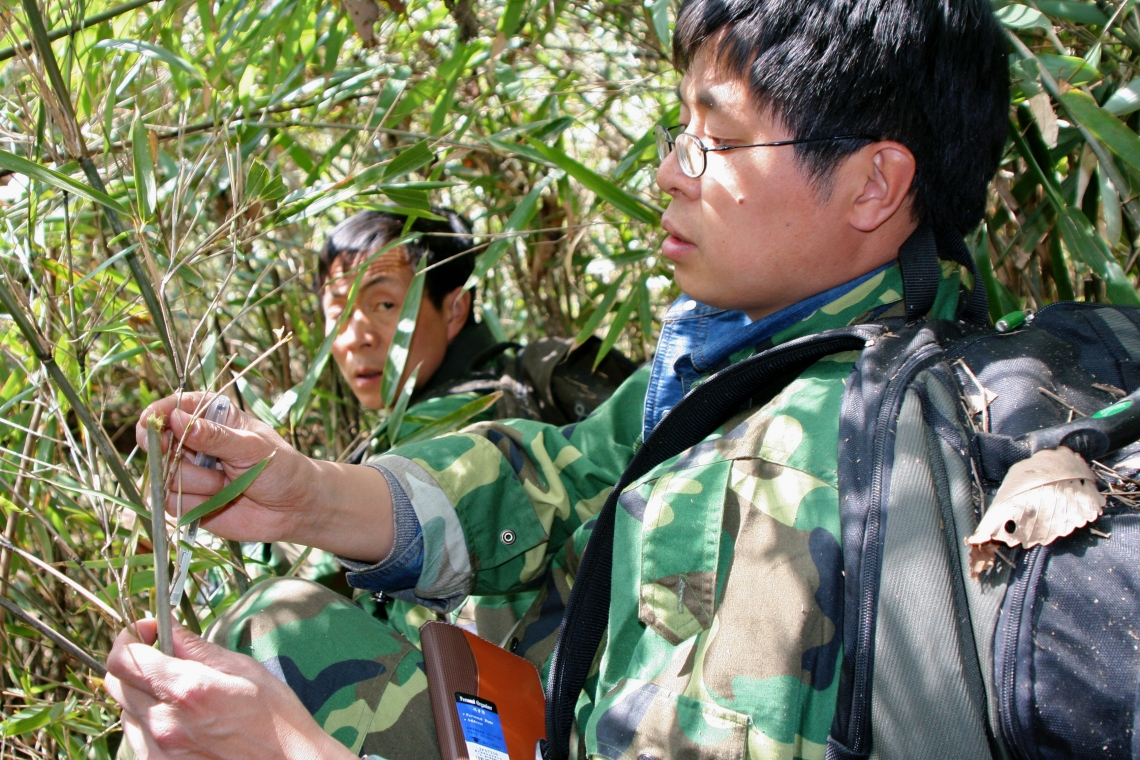
Giant panda_A melanoleuca_Foping NR_Zhang Zejun conducts research on bamboo foraging_San Diego Zoo Wildlife Alliance
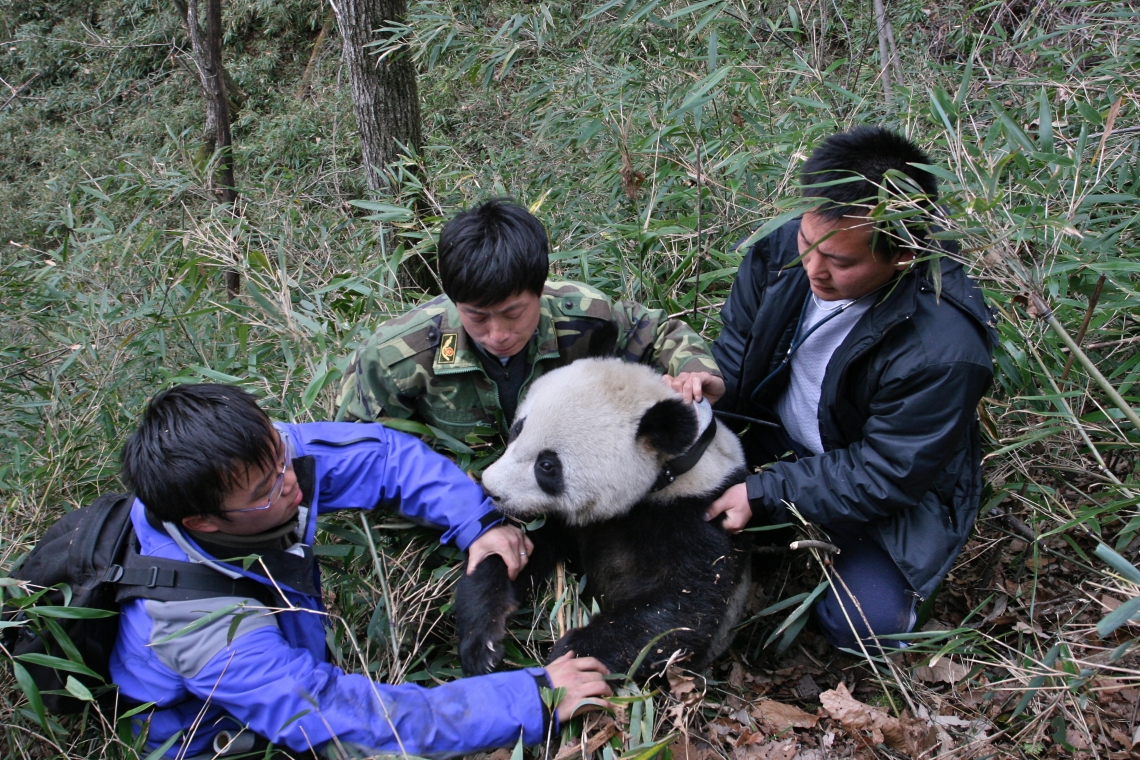
Giant panda_A melanoleuca_Foping NR_panda being fitted with GPS tracking collar_IOZCAS
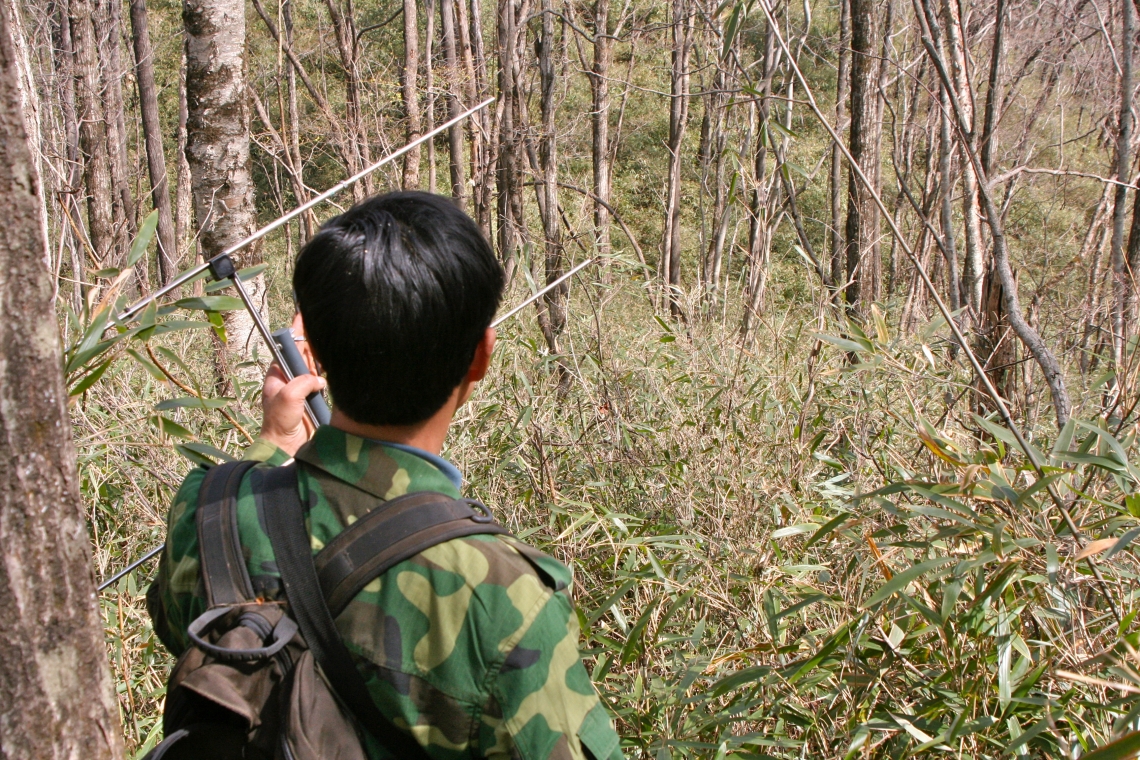
Giant panda_A melanoleuca_Foping NR_radiotracking for spatial ecology research_San Diego Zoo Wildlife Alliance
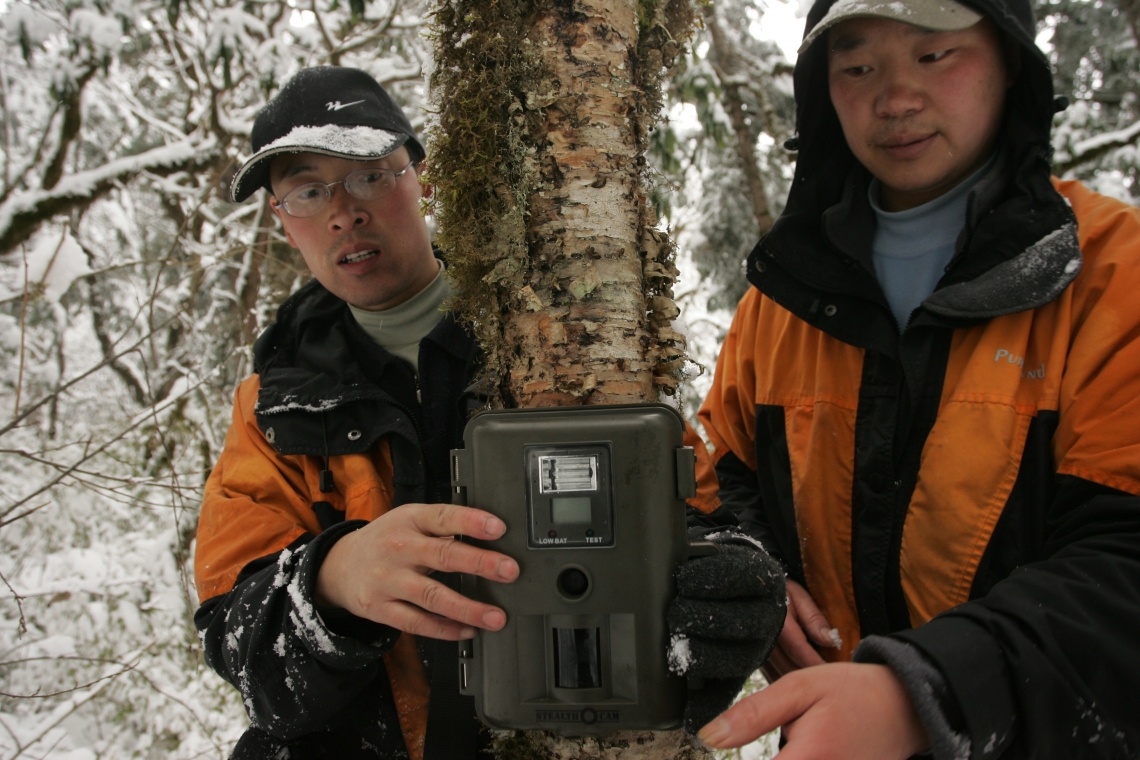
Giant panda_A melanoleuca_Wanglang NR_camera trapping has long been a key research method_Fang Wang
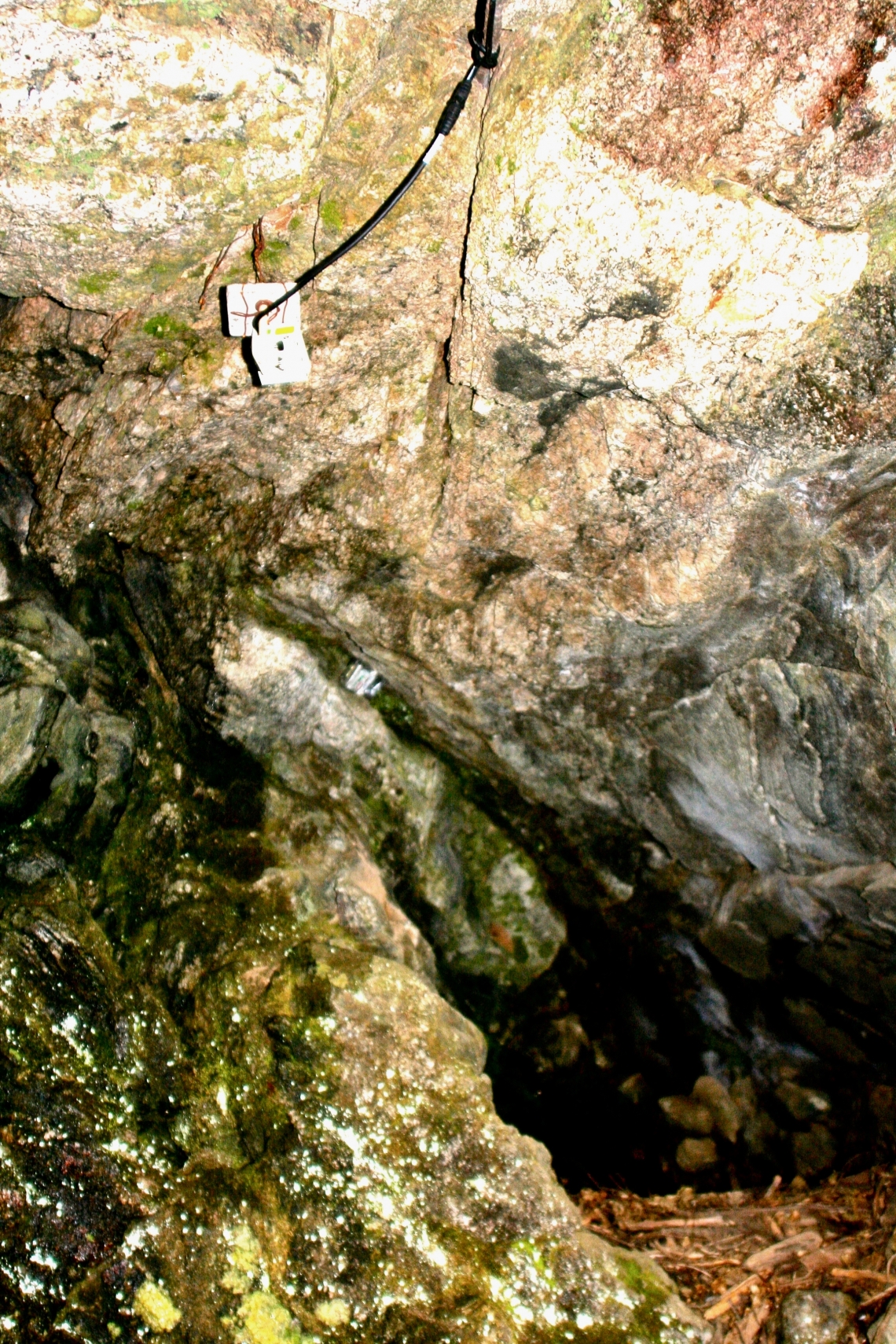
Giant panda_A melanoleuca_Foping NR_remote camera used to monitor maternal den_San Diego Zoo Wildlife Alliance
Conservation actions: Giant pandas’ nascent recovery can be attributed in large part to the extensive protected area system established in China. Establishment of protected areas specifically targeting giant pandas (called panda reserves) commenced in the 1960s and saw large numbers of additions in the 1990s and 2000s. More recently, China has pivoted toward meta-population management of pandas across their range, knitting together the network of more than 80 reserves into a single Giant Panda National Park (GPNP). Research has shown that these reserves have been effective at protecting pandas and their habitat, and that sources of human disturbance have been curtailed. The best-performing reserves (containing stable or increasing panda populations) were those with increasing bamboo cover and maturing forests. While thus far, human disturbance inside these protected areas does not appear to influence population size, other negative impacts of disturbance have been documented.
In addition to the panda reserves being a cornerstone of giant panda conservation, several other strong and effective interventions have helped change the population trajectory of this species. Chief among them is a ban on logging (Natural Forest Conservation Program) and a large ecocompensation program (Grain to Green Program, GTGP), which incentivizes local farmers to convert agricultural land to forest. Although the early roll-out of GTGP was not problem-free (in many cases leading to forest monocultures), the net effect of these two programs has been increasing forest cover, expanding the extent of panda habitat, and a substantive expansion of the panda’s range. These actions worked synergistically with other policies, such as the 1988 Wildlife Protection Law, which banned killing pandas, and was strictly enforced. At one time, logging and poaching drove panda population declines, but today they are virtually absent. In addition, China’s large-scale monitoring program (National Panda Surveys), provide critical information on population and habitat trends that inform policy and management decisions.
These measures appear to be exactly what was needed to address many of the threats facing pandas, making this species a flagship for how conservation can really work. Looking forward, the Giant Panda National Park addresses issues of connectivity and inter-population management, supplemented with translocations to enable genetic rescue of small, isolated population. However, the implementation of the GPNP is not yet complete and there are many concerns and competing ideas about how best to manage this new approach, so only time can tell if this will be the conservation intervention that finally secures the panda’s future. Also remaining is the need for a clear plan for addressing livestock encroachment and other human disturbance, coupled with ecocompensation incentives and regulatory muscle (i.e., the carrot and the stick). Finally, for panda populations to remain resilient into the future, an understanding of and mitigation plan for the expected impact of climate change must be developed.
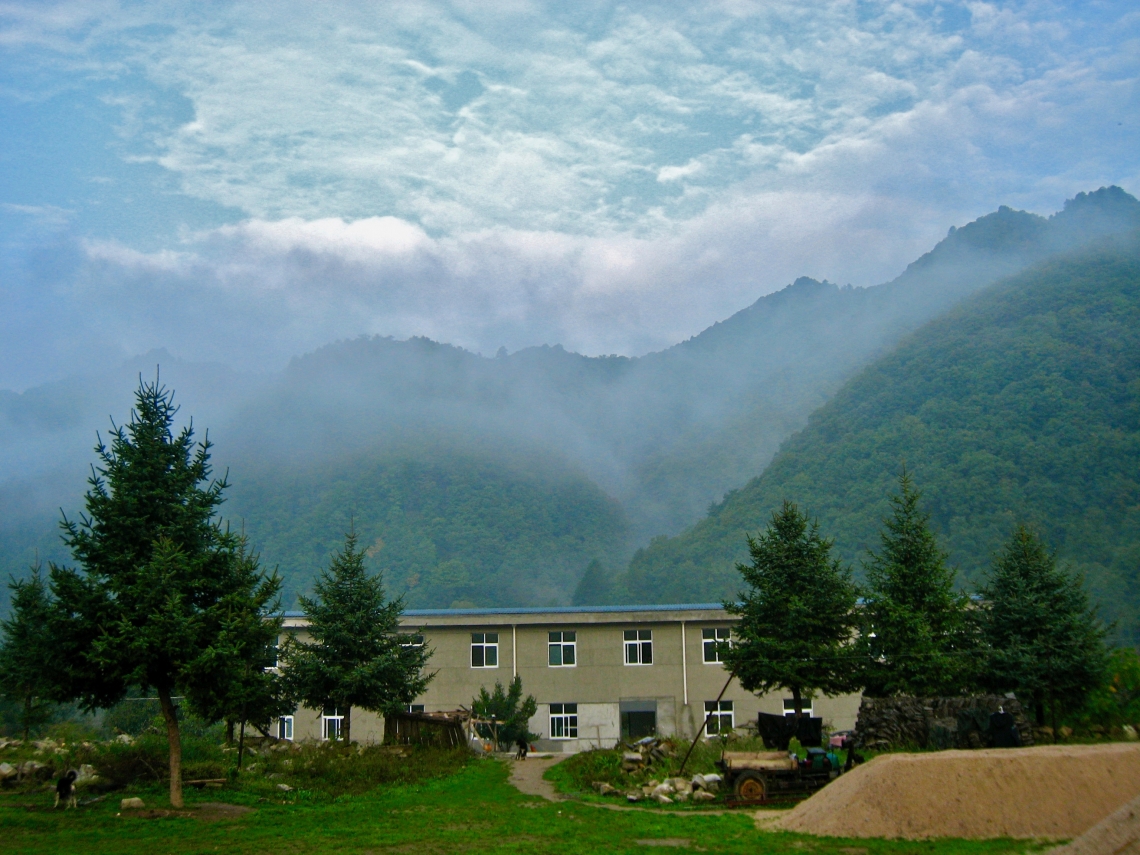
Giant panda_A melanoleuca_Foping NR_protection station houses staff for monitoring and protecting reserve_San Diego Zoo Wildlife Alliance

Giant panda_A melanoleuca_Foping NR_frequent patrols for monitoring and to deter human encroachment into PAs_San Diego Zoo Wildlife Alliance

Giant panda_A melanoleuca_Foping NR_frequent patrols for monitoring and to deter human encroachment into PAs_San Diego Zoo Wildlife Alliance
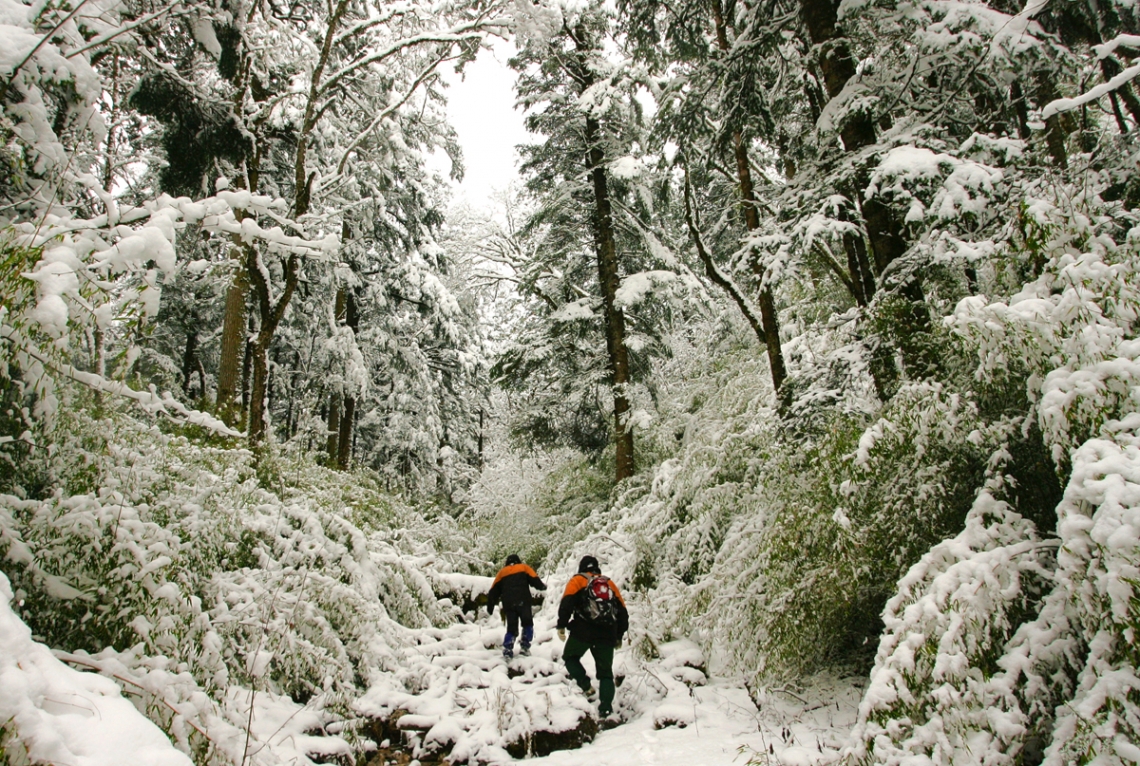
Giant panda_A melanoleuca_Wanglang NR_annual monitoring key to conservation strategy_Fang Wang

Giant panda_A melanoleuca_Wolong NR_tree den and importance of protecting old growth forest_San Diego Zoo Wildlife Alliance

Giant panda_A melanoleuca_Wolong BC_panda mating in captivty as part of assurance population and source of reintroduction candidates_San Diego Zoo Wildlife Alliance